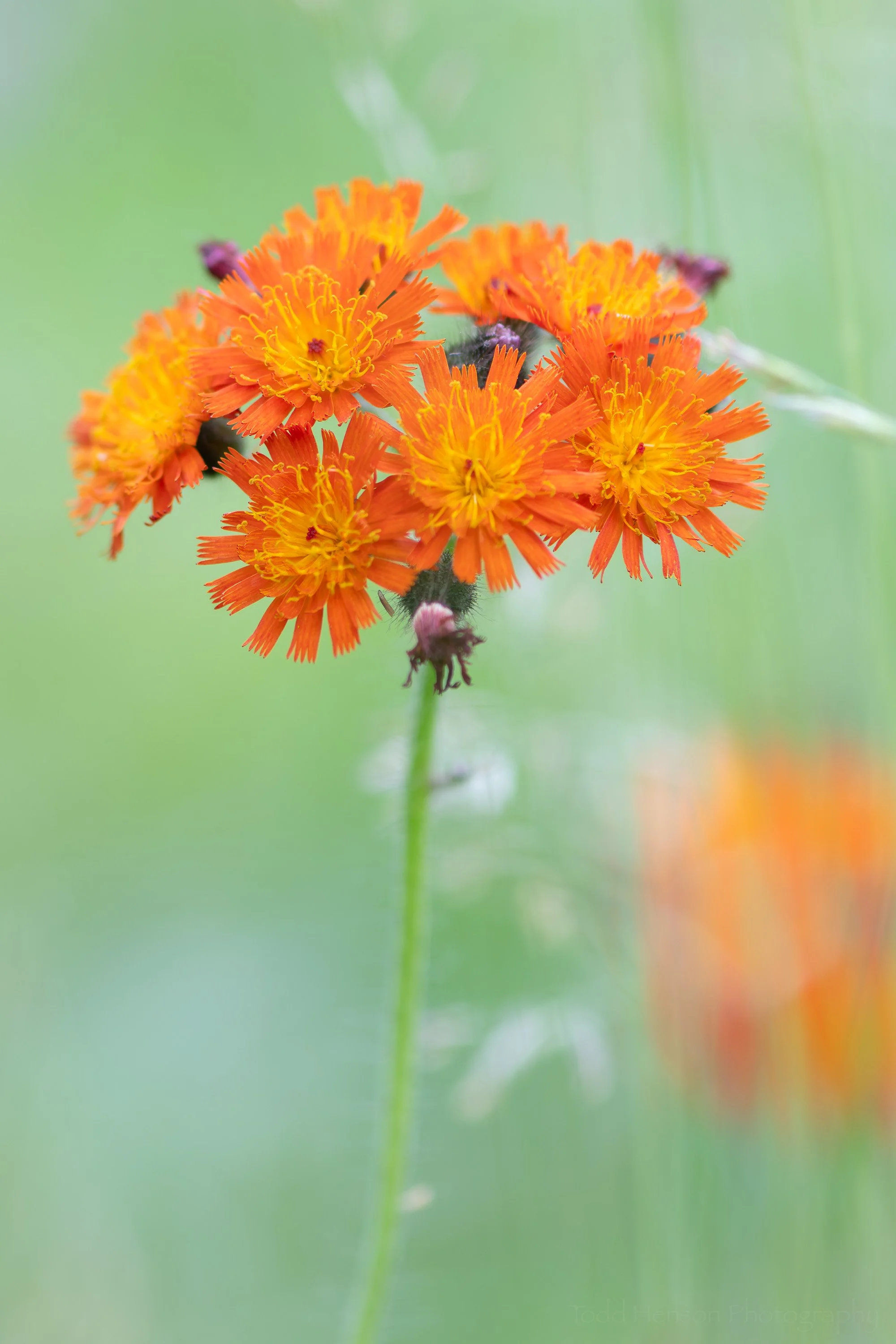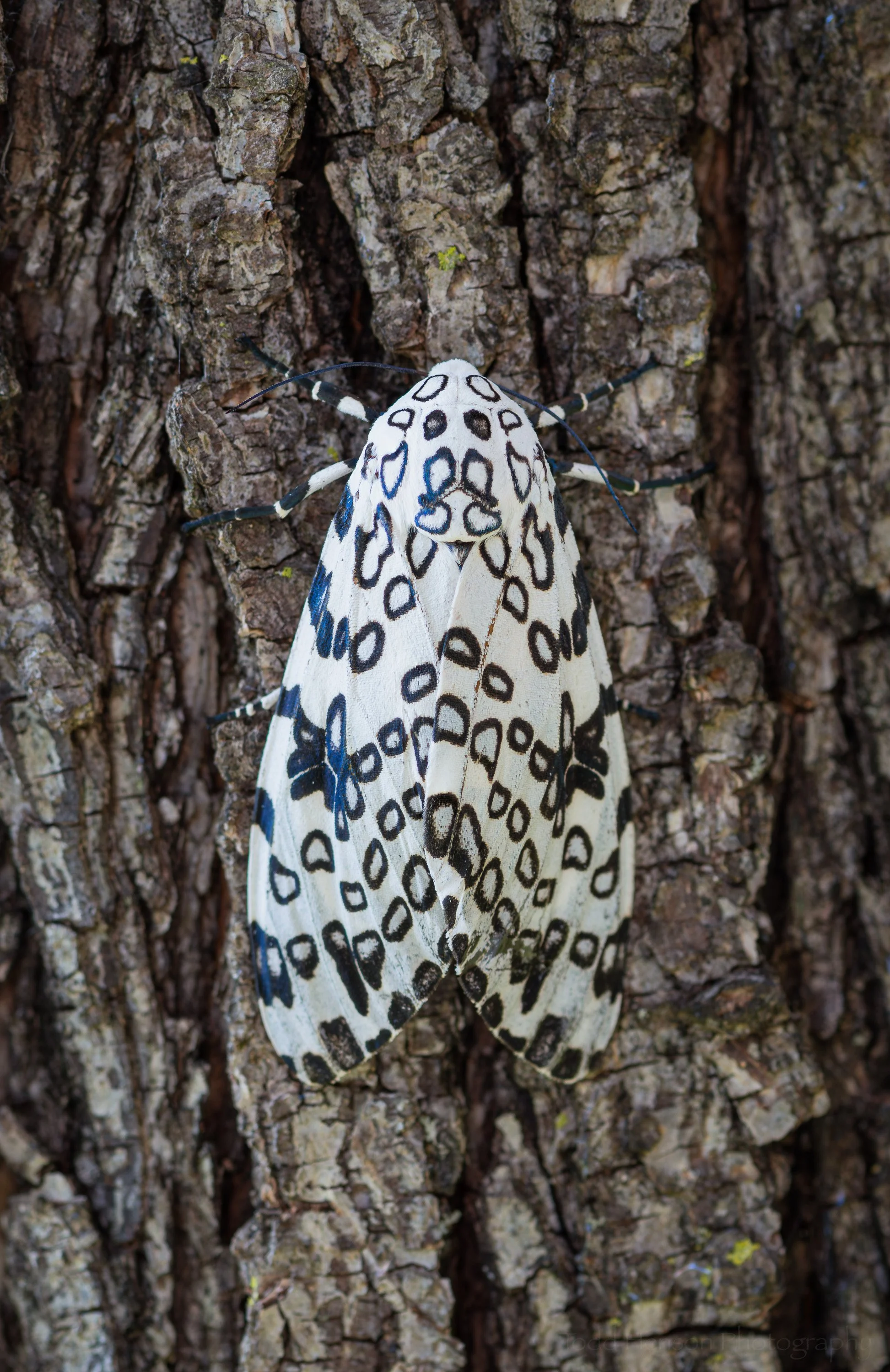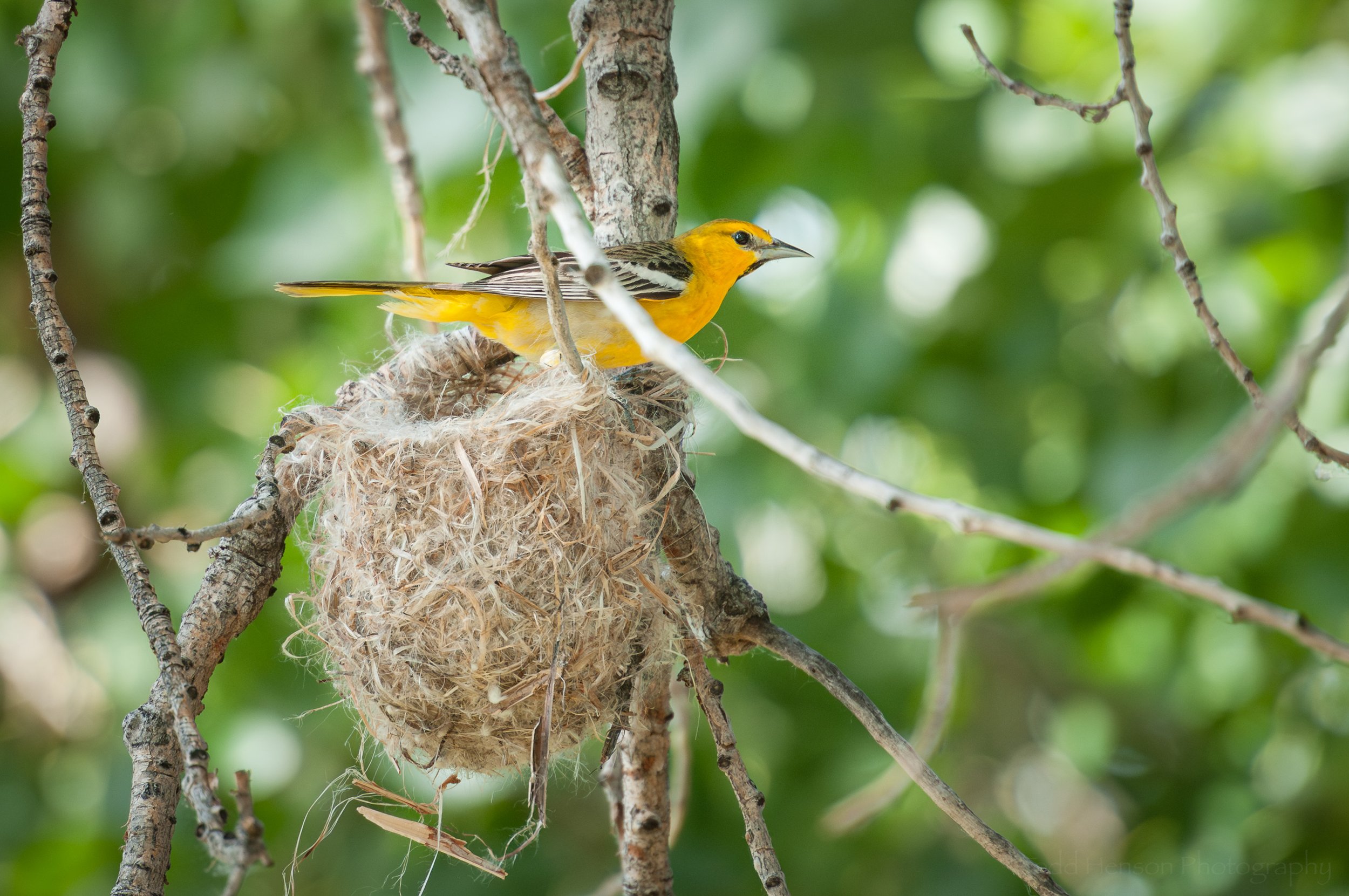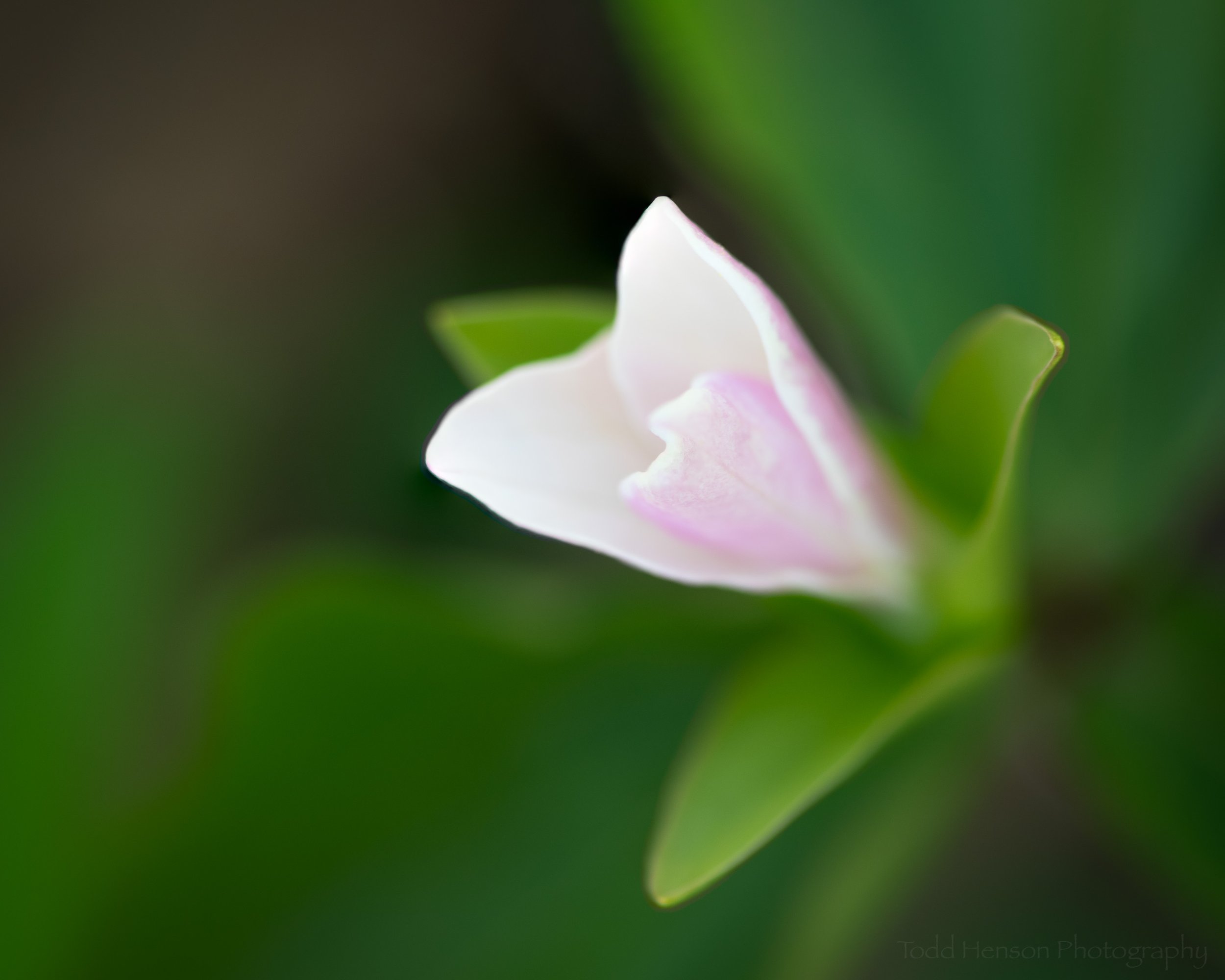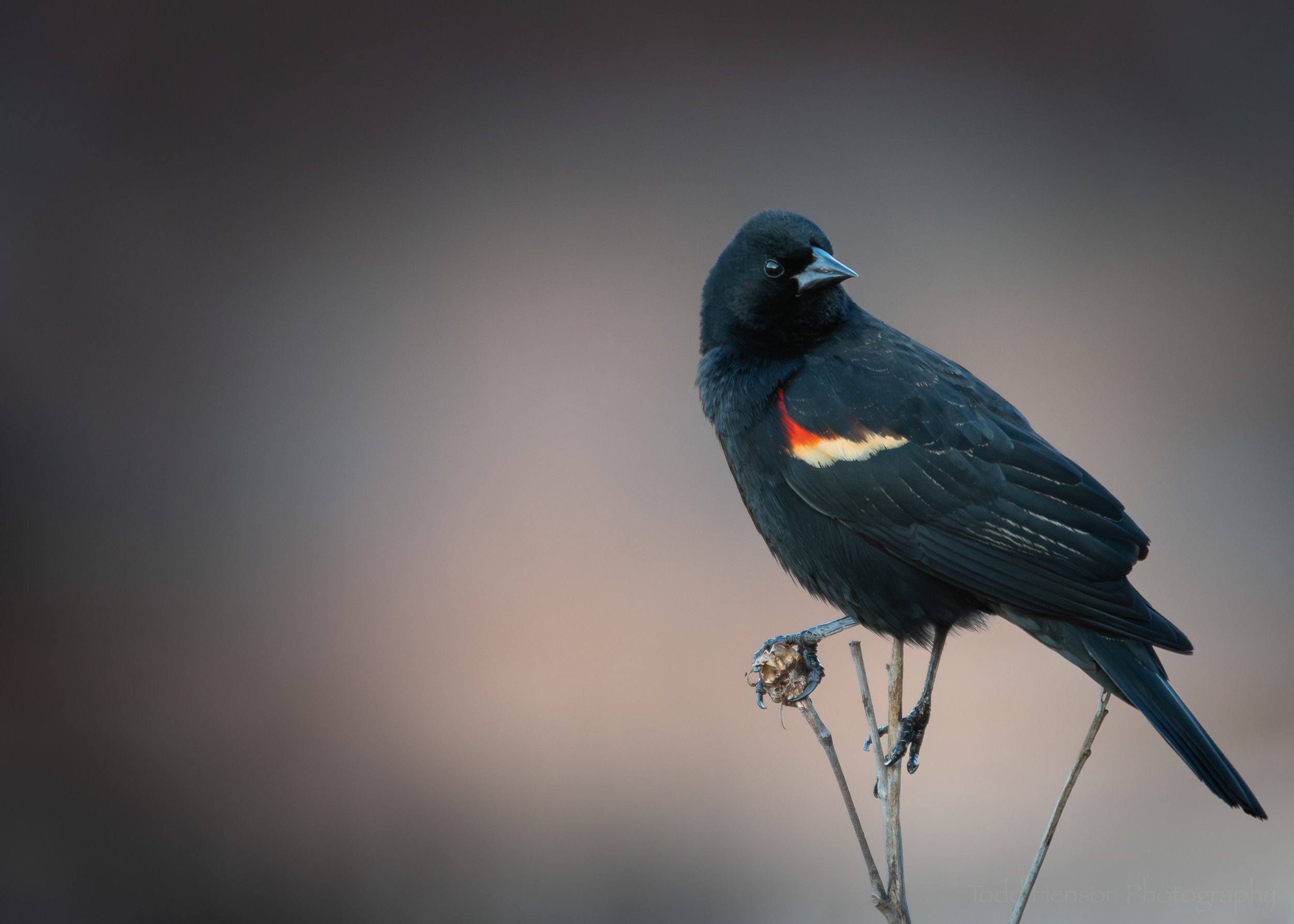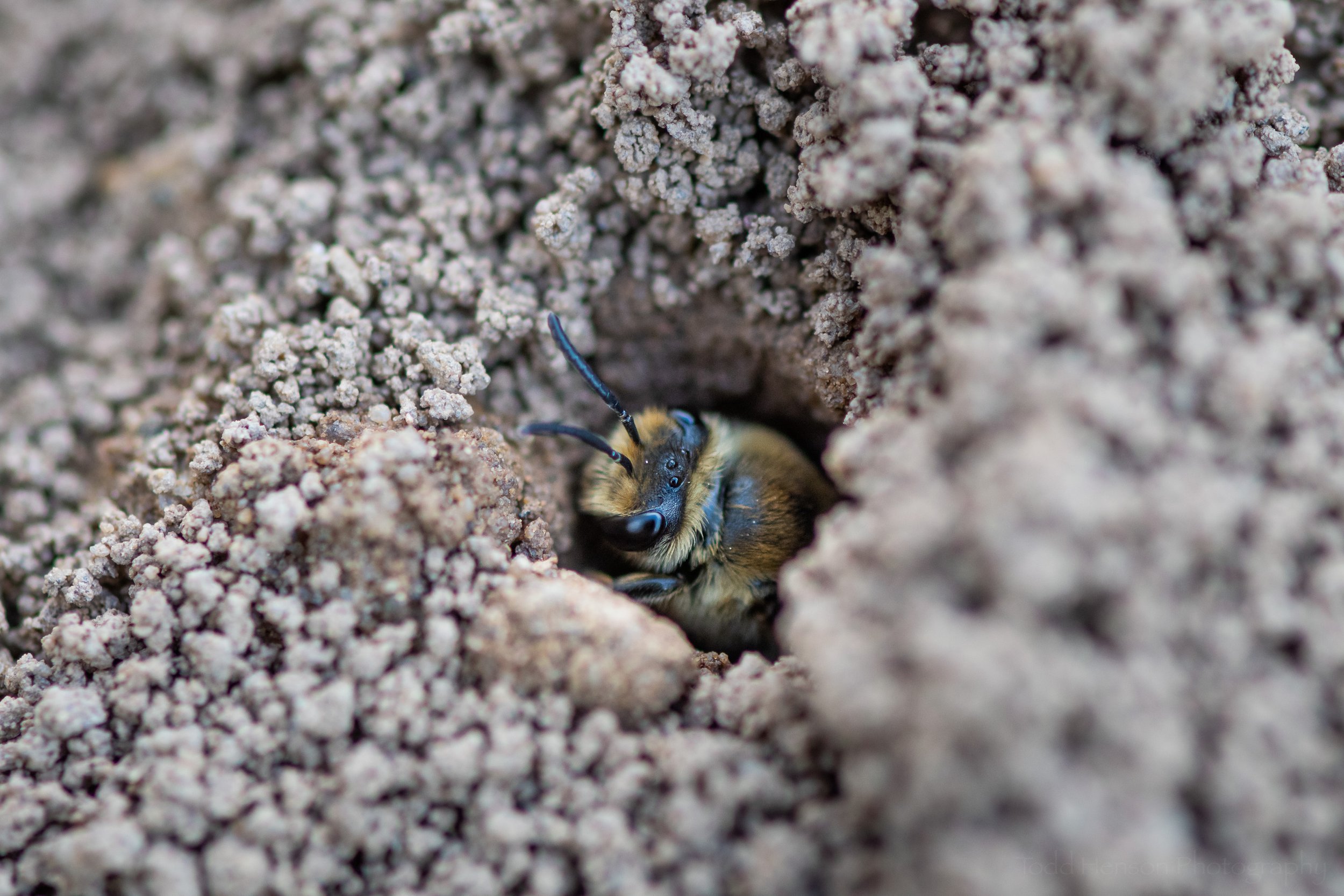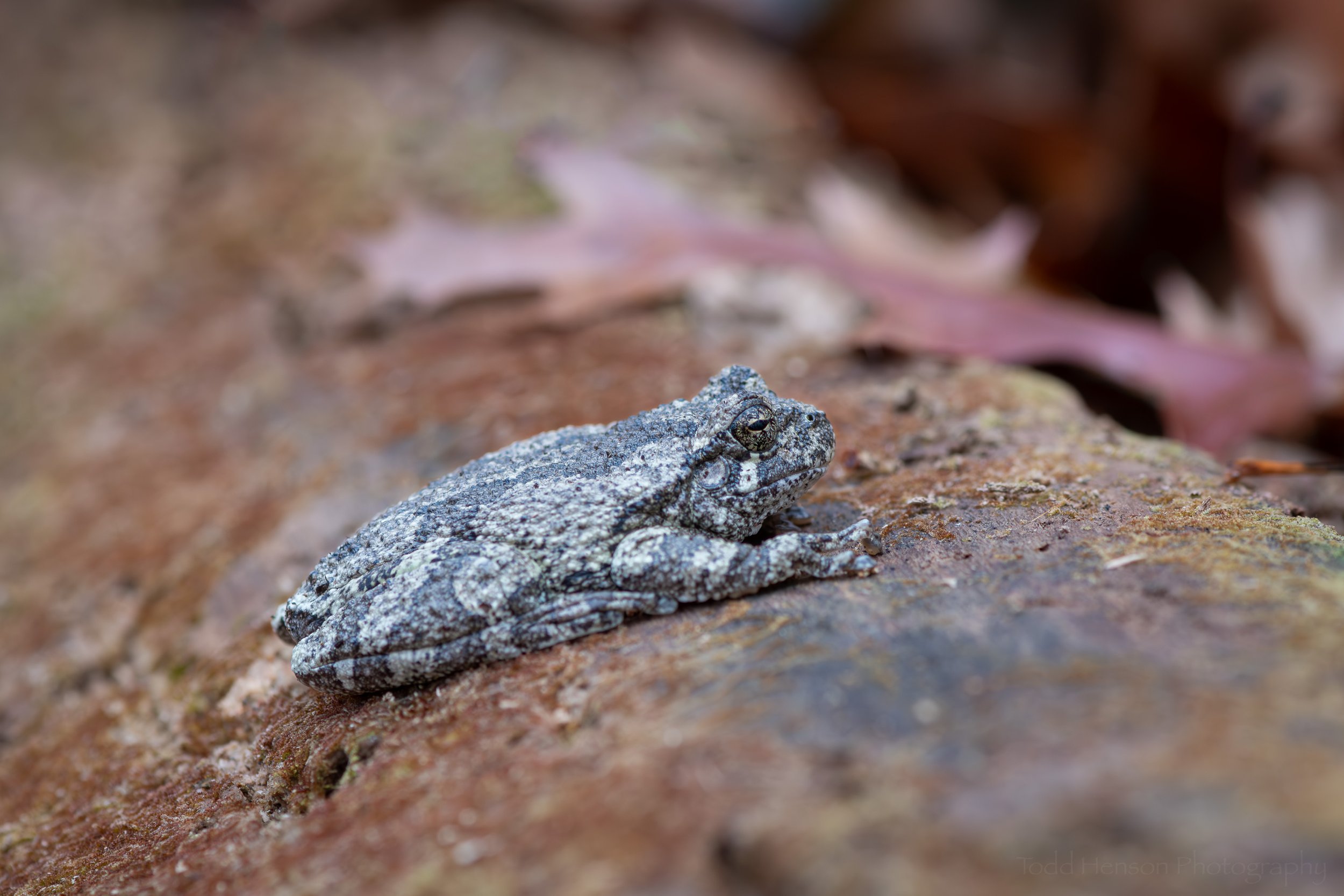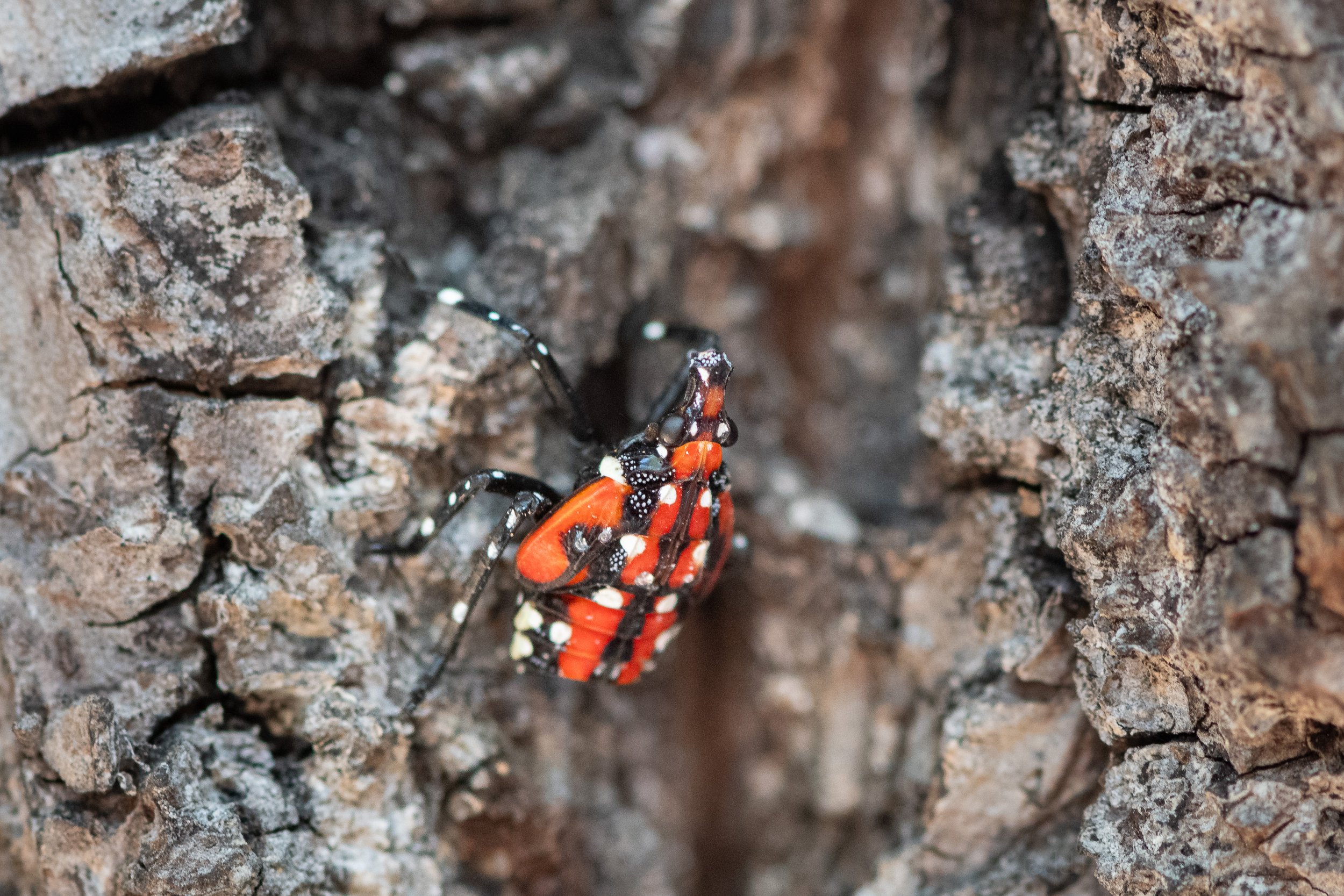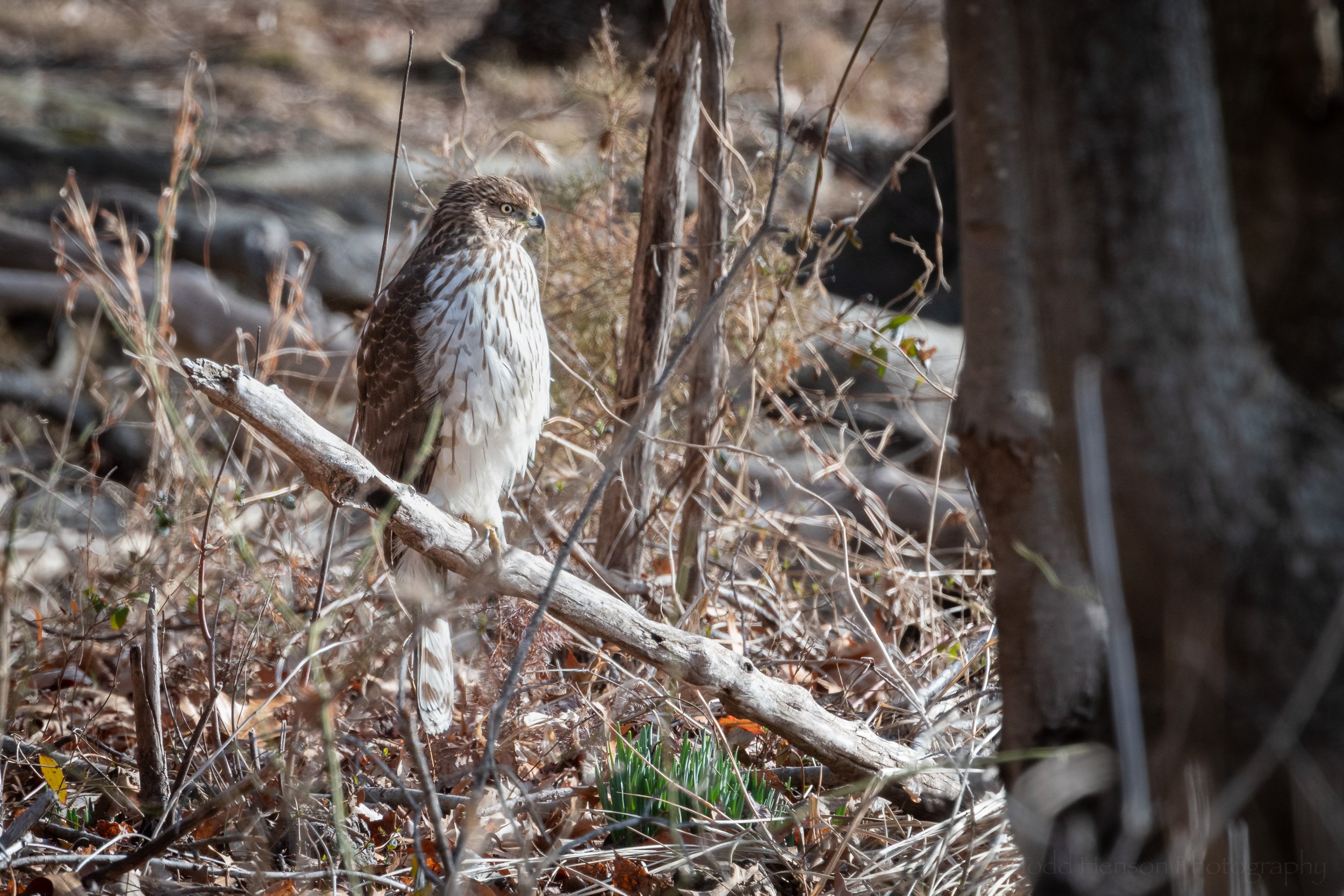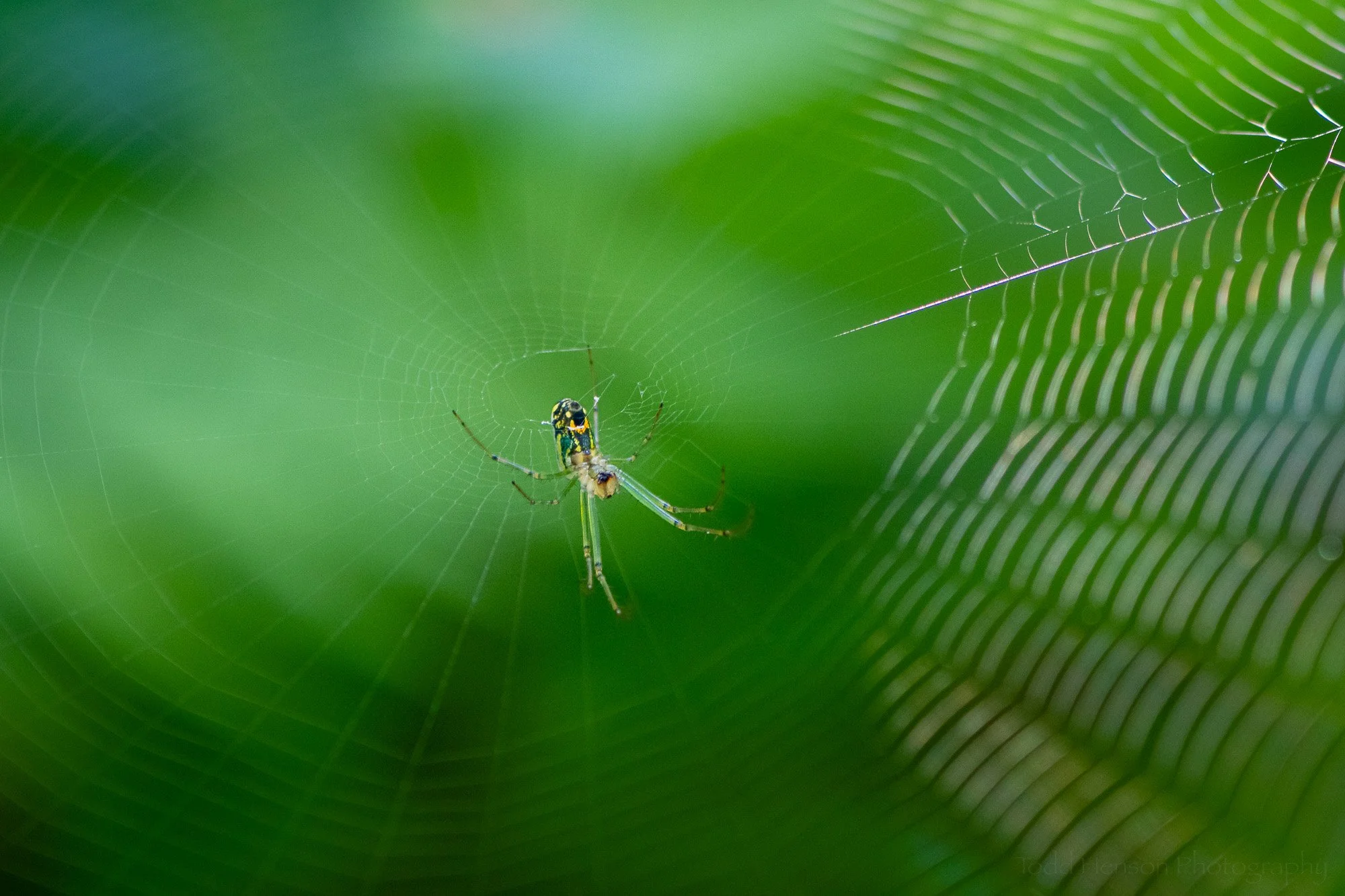Yellow-rumped Warbler of the Myrtle variety. Notice the white throat. You can also see the 2 yellow patches on either side of its breast.
Yellow-rumped Warblers are a common spring migrant as they move north to build nests and breed. We found a group of them in a local wildlife refuge along the same trail as the Palm Warblers I recently wrote about. The trail was a dirt road separating a small wooded area and a grassy/bushy area. The Yellow-rumped Warblers, along with the Palm Warblers, were flying back and forth between the trees and the bushes and grassland.
Yellow-rumped Warbler facing forward, giving a good view of its white throat and the yellow patches either side of its breast.
The Yellow-rumped Warblers in these photographs are of the Myrtle variety, which is more common along the eastern United States. The Audubon variety is more common in the west. One way of telling them apart, at least when they are distinct species and not in the band where they intermingle, is the color of their throat. Myrtle Warblers typically have a white throat, whereas Audubon Warblers typically have a yellow one.
Yellow-rumped Warbler looking down, showing off the yellow stripe on top of its head.
If you look at each of the photos you’ll also see the 4 patches of yellow commonly found on Yellow-rumped Warblers. Their name comes from the yellow patch on their rump, but they also have a small patch of yellow on the top of their head, and a patch on either side of the breast.
Backside of a Yellow-rumped Warbler, showing its namesake yellow rump. Also notice it is tilting its head to the left showing off the yellow stripe on top.
These were, perhaps, the first Yellow-rumped Warblers that I photographed. They are an attractive bird and I look forward to creating better photographs of them in the years ahead.
Do you enjoy these posts?
Sign up to receive periodic emails with updates and thoughts. Don’t worry, I won’t spam you. And please consider purchasing artwork or products from my online store, and using my affiliate links in the sidebar to the right when shopping online.
I appreciate your support!
Resources
The links below are affiliate links and I will be compensated if you make a purchase after clicking on my links. This is at no extra cost to you.
If you’d like to learn more about Yellow-rumped Warblers, or any other warbler species, check out A Field Guide to Warblers of North America, one of the Peterson Field Guides. It’s over 650 pages, all devoted to warblers.
Or, if you’d like a more general field guide to birds look at the Peterson Field Guide to Birds of North America. This is my favorite birding field guide. Another great one is the Kaufman Field Guide to Birds of North America. See my Resources page for more info on the field guides I use.
